Ethics of AI Project
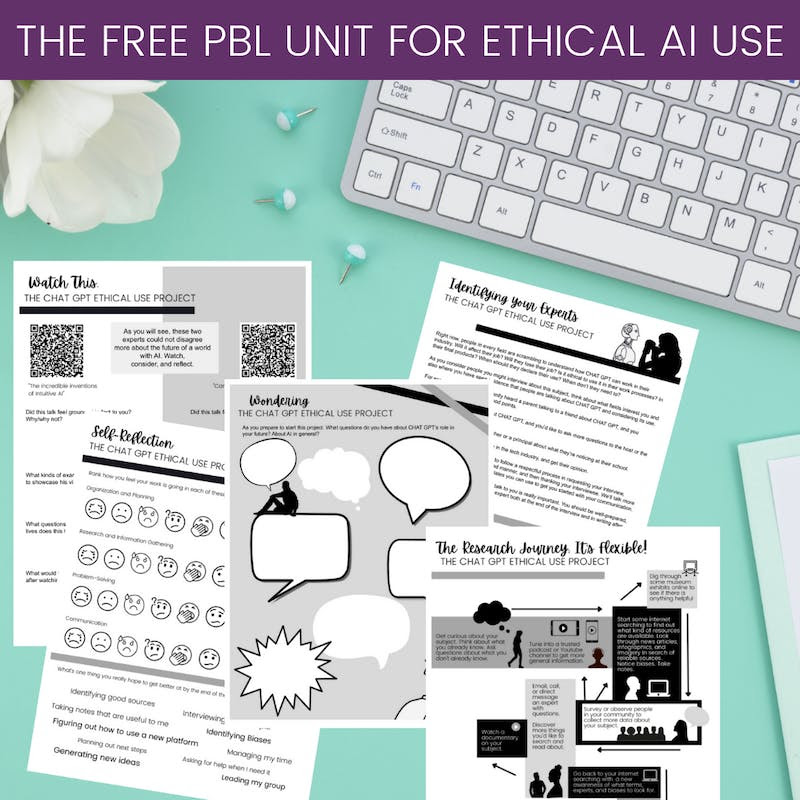
AI is here and everyone is paying attention, including our students. Maybe they’re wondering how it can help them with their work, while still making room for their originality, creativity, and sense of morality. This project-based learning unit is designed to help them figure it out.
Collaborative Project Ideas
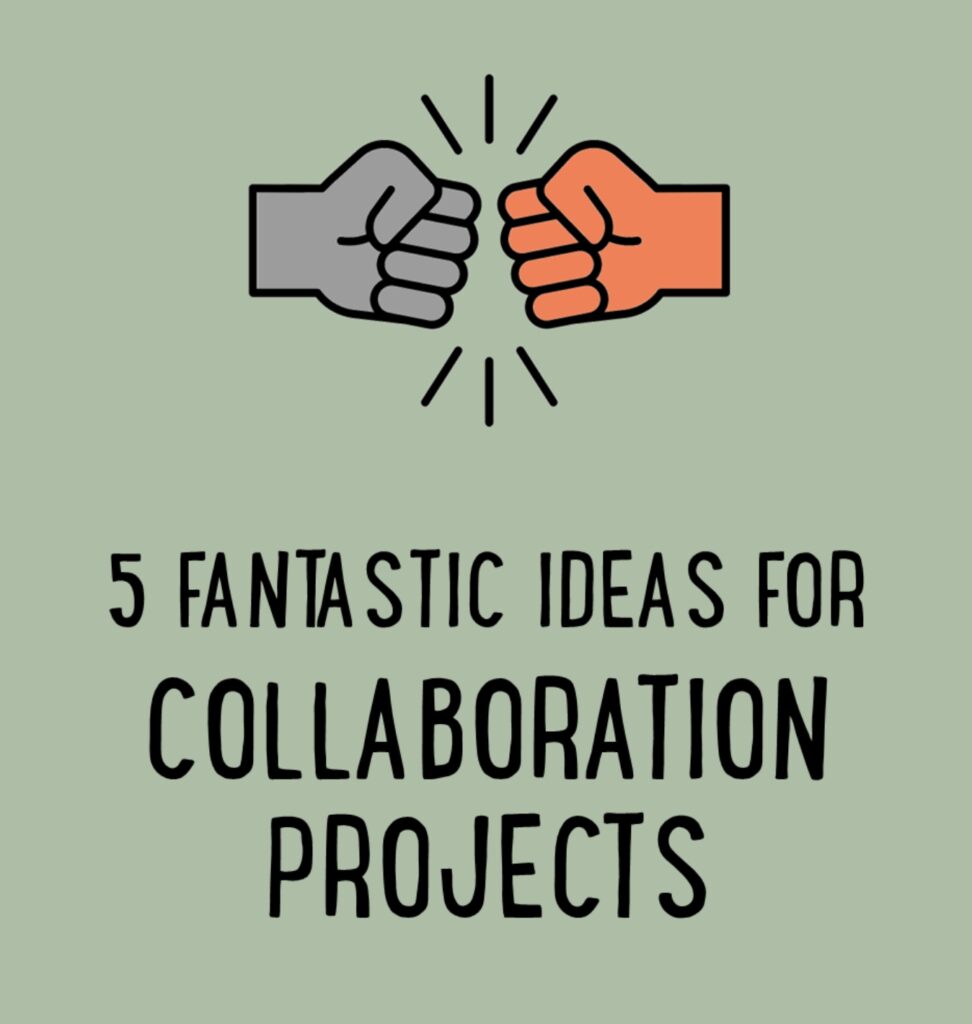
Working together to solve problems and create new things is a vital part of life, so it makes sense to practice it in school. The ideas presented here are for teacher-tested, customizeable projects that went well and got students actually collaborating, not just dividing up the work.
#oneword2022
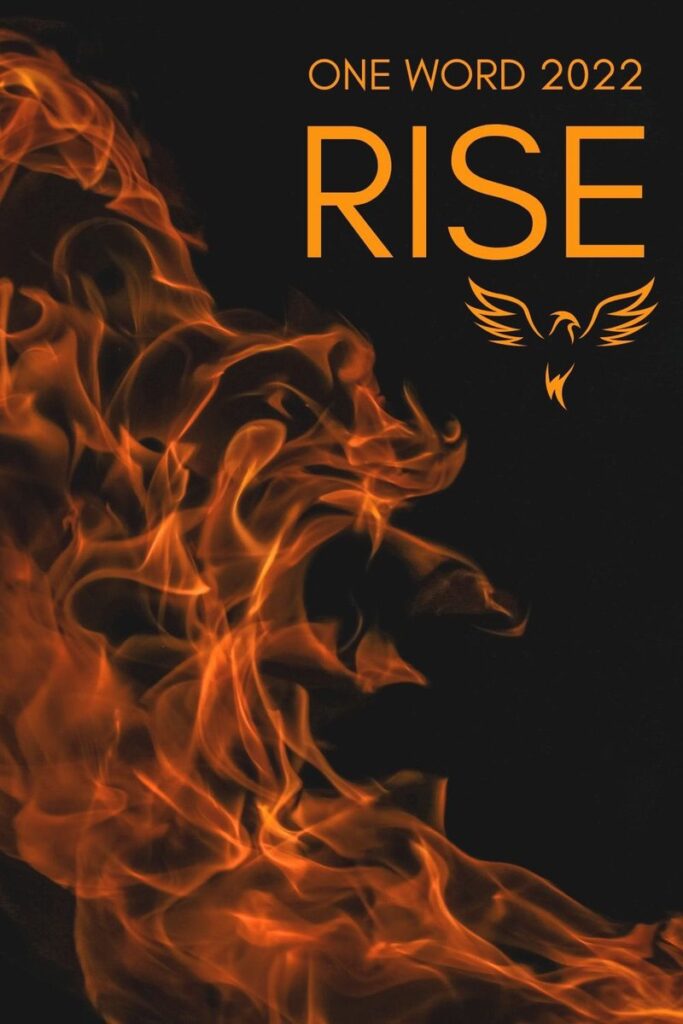
What is your ONE WORD for 2022? This creative assigment is a great way to have students reflect on their goals, ambitions, dreams, hopes and/or aspirations for 2022.
Choose Your Own Adventure Project
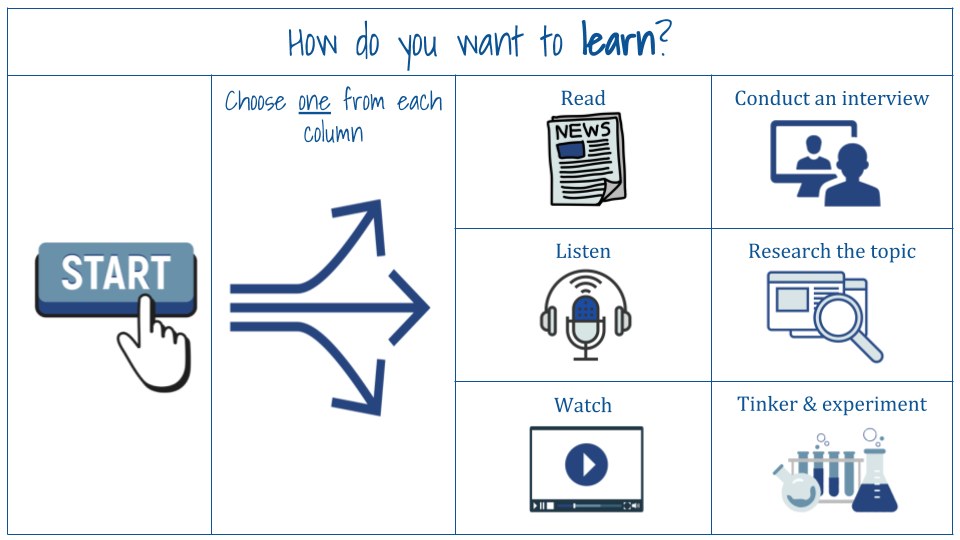
This creative “choose your own adventure” learning experience gives students lots of voice and choice in just about every aspect of learning and would be perfect for a term project. A google slide deck template provides the structure but students choose how they want to learn, how they want to process what they discovered, how they want to practice and review, and how they want to share their learning.
E-Books

You’ve reached the end of a unit or year, and you want students to demonstrate their learning in a way that requires them to synthesize information, apply it in new ways, and reflect on how they have grown. To achieve any of these goals, an end-of-unit exam doesn’t quite cut it. Instead, have students create their own PDF e-books, packaging up some aspect of their learning into a finished digital product…
Curation Assignments
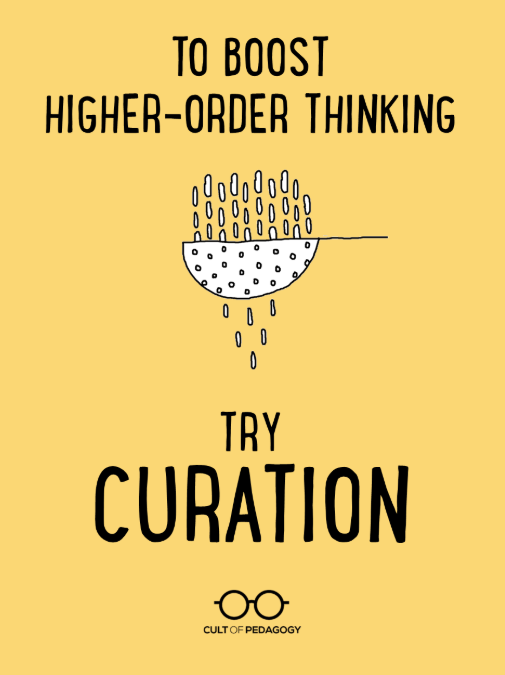
When it’s time to plan the learning experiences that would have our students operating on higher levels, some of us come up short. We may not have a huge arsenal of ready-to-use, high-level tasks to give our students. Instead, we often default to having students identify and define terms, label things, or answer basic recall questions. It’s what we know. And we have so much content to cover, many of us might feel that there really isn’t time for the higher-level stuff anyway. If this sounds anything like you, I have a suggestion: Try a curation assignment.
Infographics Project
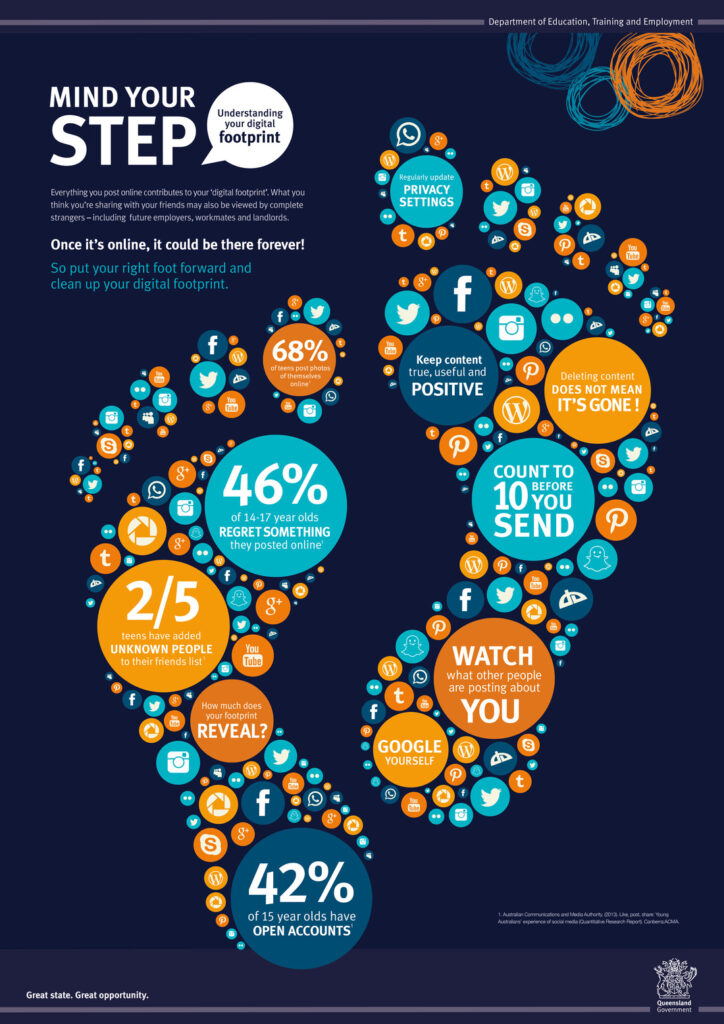
A good infographic can distill a concept so clearly. Take a hugely complex issue and boil it down to a beautiful display of the most important stats, facts, quotations, and images. Creating an infographic is the work of an artist, a writer, a researcher, and a critical thinker. It is an ideal medium for our students…
Getting Started with Genius Hour
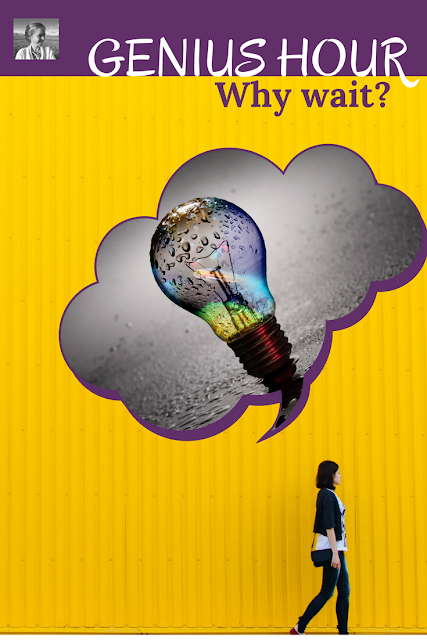
Do you find yourself searching for that one project that would truly engage your students? That would empower them to explore their passions? Do you sometimes feel that despite the many ways you are trying to creatively engage them, you just can’t reach everyone? Enter, genius hour. 20% time. Passion projects…
Pop-Up Debates
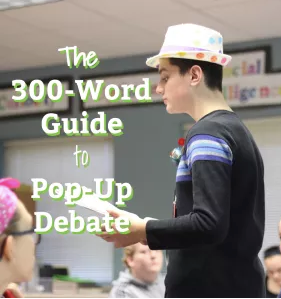
Pop-up Debate is a method for managing and facilitating in-class debates; it is easily modifiable for other speaking scenarios, such as discussions or toasts.
Students use assigned text(s), logic, and/or course content to respond to a debatable prompt and their peers’ arguments using the rules below. Every student speaks 1+ times, depending on time constraints. These limits are set by the teacher. To speak, students simply “pop up” at their desks and talk. First person to speak has the floor. When multiple students pop up, teach them to politely yield the floor. Argument is a collaborative endeavor, and collaboration isn’t a pointed finger and, “Sit down, I was up first.”
Is That Higher-Order Task Really Higher-Order?
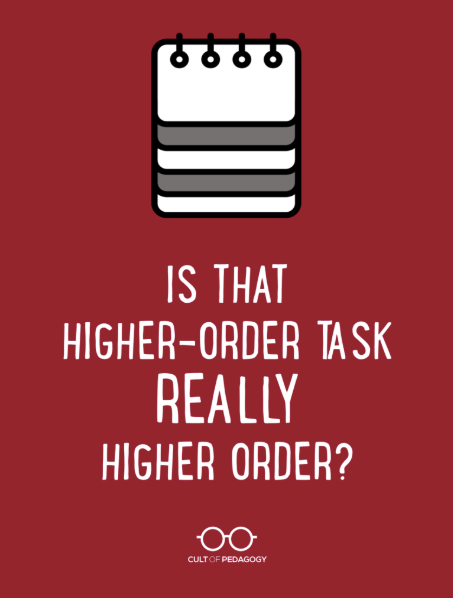
It’s kind of a given that most teachers want their students to be doing rigorous, challenging work. Ask any teacher, “Is it your goal to simply have students regurgitate facts in your class?” and every time, the answer will probably be no. And yet, that exact thing is happening more often than we realize. It’s not for lack of trying: For years, teachers have consulted their Bloom’s flip charts and DOK wheels to choose the verbs that are meant to represent higher levels of thinking. In a lot of cases, though, while the right verbs are being used, the tasks they represent aren’t actually on the level teachers think they are.
Wicked Problems & Impossible Projects: 33 Questions at DOK Level 4
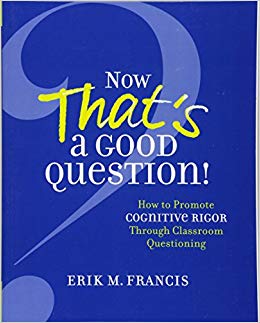
Wicked problems and impossible projects are complicated by nature because of the many components, factors, individuals, and resources affected and involved. They promote cognitive rigor by providing students with the opportunity to demonstrate and communicate their knowledge and thinking at the highest level of Bloom’s taxonomy (analyze, evaluate, create) and deepest levels of Webb’s models (strategic and extended thinking). Here are examples of good questions our students can respond to using the deeper knowledge and thinking they have acquired and developed.
DOK Ceilings
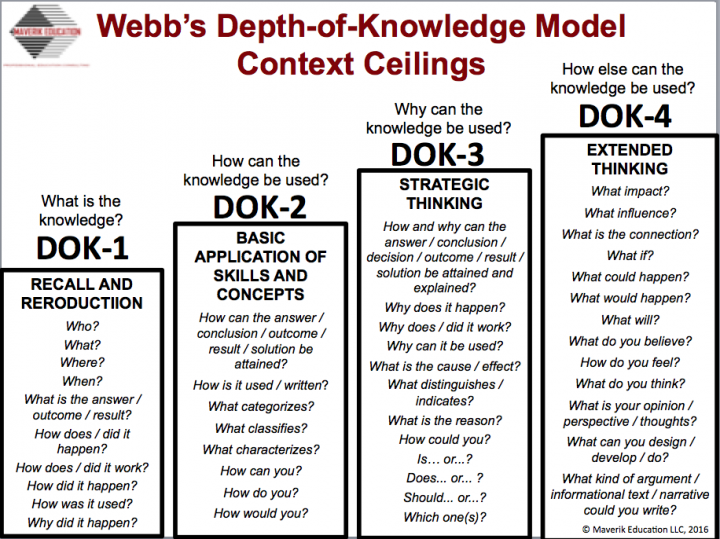
This visual, designed by Erik Francis of Maverick Education, is intended for teachers to use to plan and provide their instruction and assessment, and also for administrators to use as a guide for observing and evaluating teacher instruction and effectiveness. It is an attempt at a graphic representation that not only embodies Webb’s concept of depth of knowledge but also how Hess, Carlock, Jones, and Walkup explain how the Webb’s DOK model superimposes with Bloom’s Revised Taxonomy in their Cognitive Rigor Matrix.
DOK is NOT a Wheel!
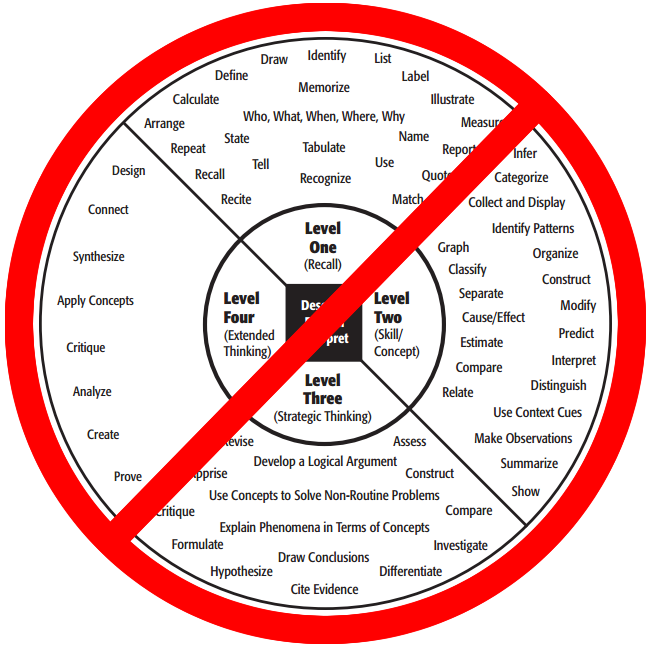
Depth of Knowledge. It’s a concept we in education have heard a lot about since our states transitioned to college and career ready standards – be it the Common Core State Standards, the Next Generation Science Standards, or whatever each individual state has decided to call their academic standards that promote college and career readiness.
It’s also one of the most misinterpreted and misrepresented concepts in education that is not only confusing but also frustrating us educators. Most of it is due to the infamous DOK Wheel.
What Does DOK Level 4 Look Like?
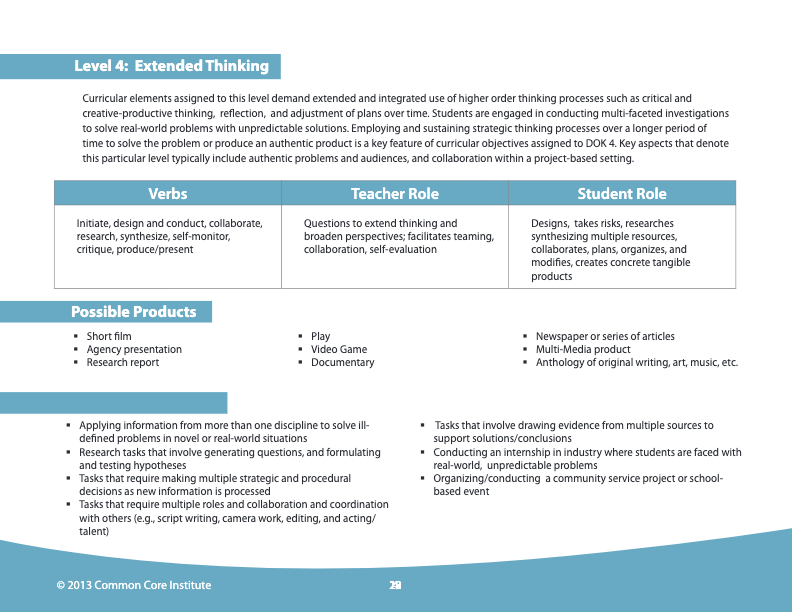
Curricular elements assigned to this level demand extended and integrated use of higher order thinking processes such as critical and creative-productive thinking, reflection, and adjustment of plans over time. Students are engaged in conducting multi-faceted investigations to solve real-world problems with unpredictable solutions. Employing and sustaining strategic thinking processes over a longer period of time to solve the problem or produce an authentic product is a key feature of curricular objectives assigned to DOK 4. Key aspects that denote this particular level typically include authentic problems and audiences, and collaboration within a project-based setting.
History of Higher Order Thinking Tools
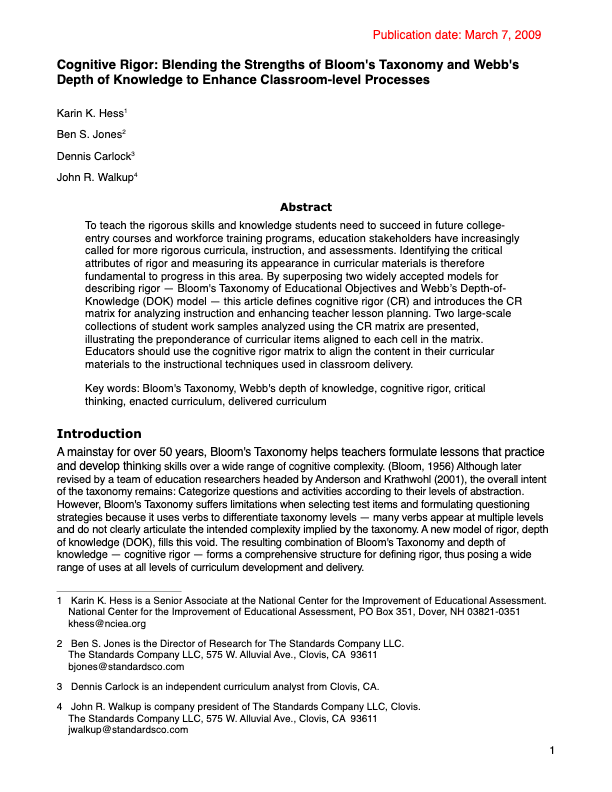
Cognitive Rigor: Blending the Strengths of Bloom’s Taxonomy and Webb’s Depth of Knowledge to Enhance Classroom-level Processes
Hess Cognitive Rigor Matrix (Classroom Walk-Through Tool)
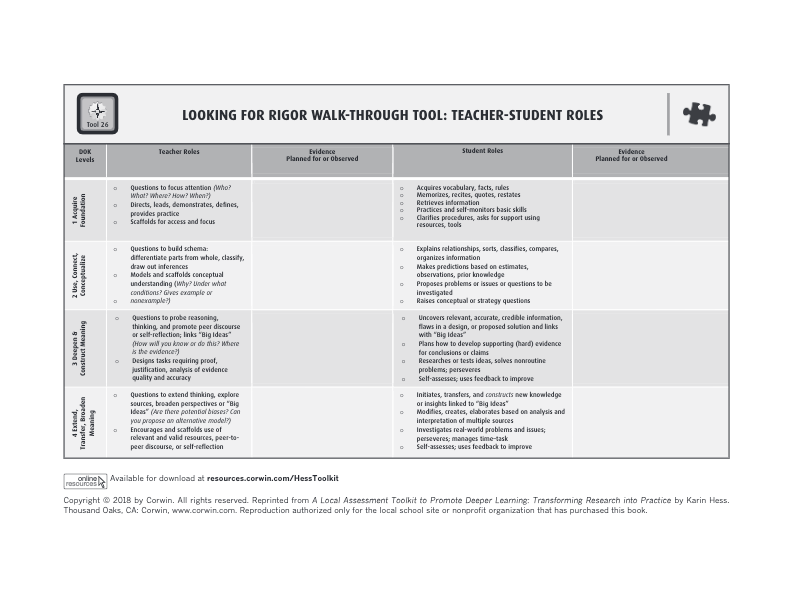
Looking for rigot walk-through tool: teacher and student roles.
Hess Cognitive Rigor Matrix (CTE)
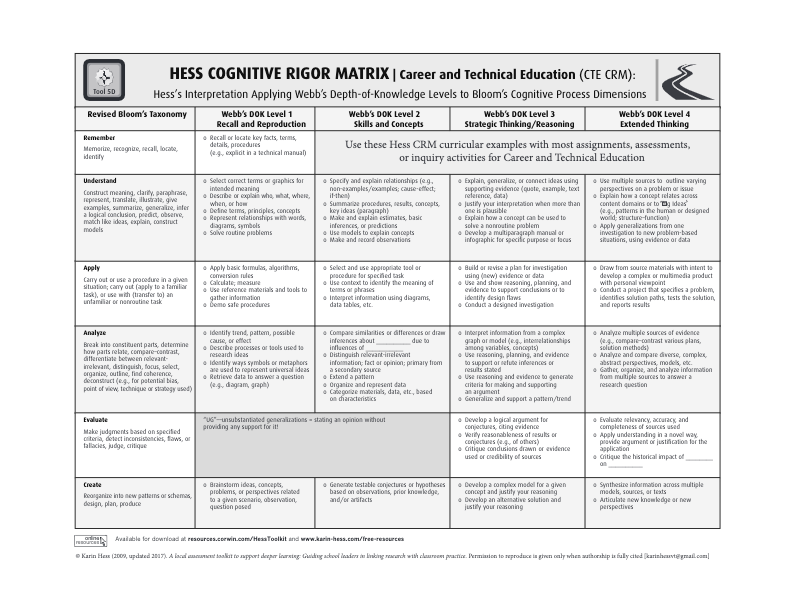
Hess’s Interpretation Applying Webb’s Depth-of-Knowledge Levels to Bloom’s Cognitive Process Dimensions in Career and Technical Education
Hess Cognitive Rigor Matrix (World Language)
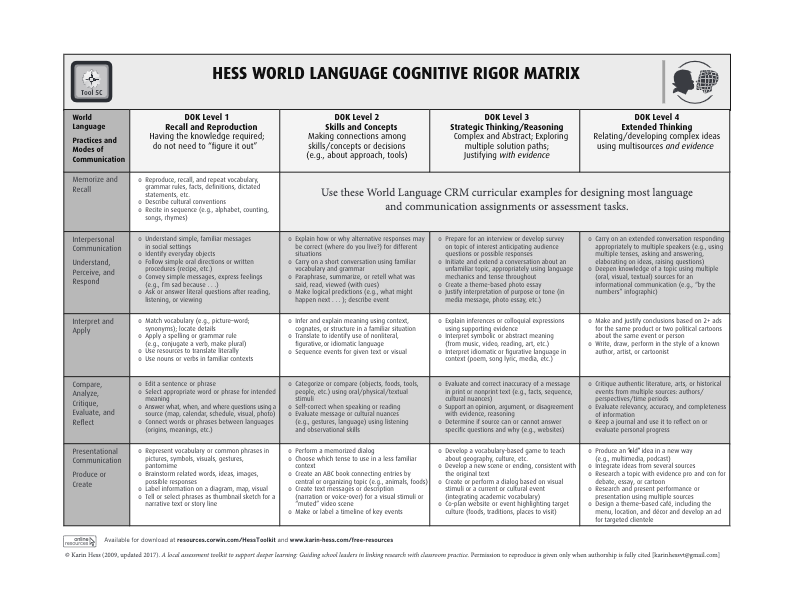
Applying Webb’s Depth-of-Knowledge Levels to Bloom’s Cognitive Process Dimensions in World Language
Hess Cognitive Rigor Matrix (Health/PE)
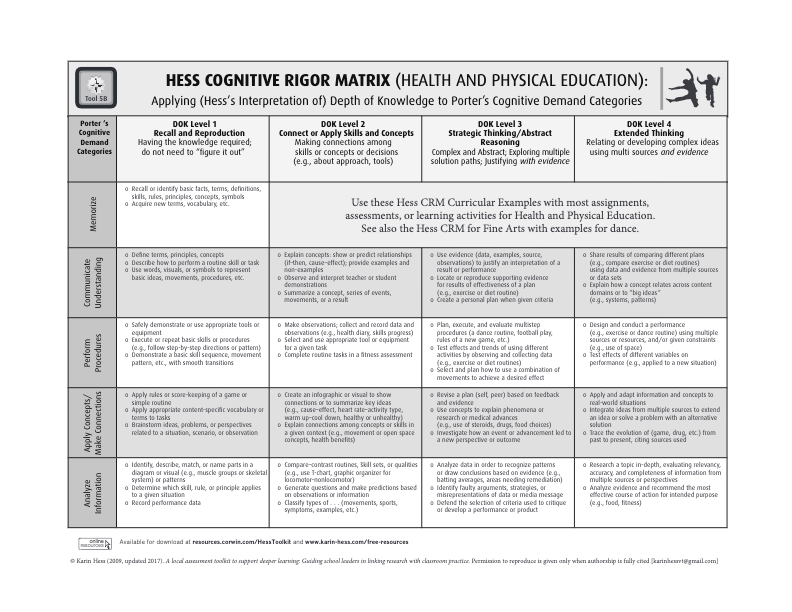
Applying (Hess’s Interpretation of) Depth of Knowledge to Porter’s Cognitive Demand Categories in Health and Physical Education
Hess Cognitive Rigor Matrix (Fine Arts)
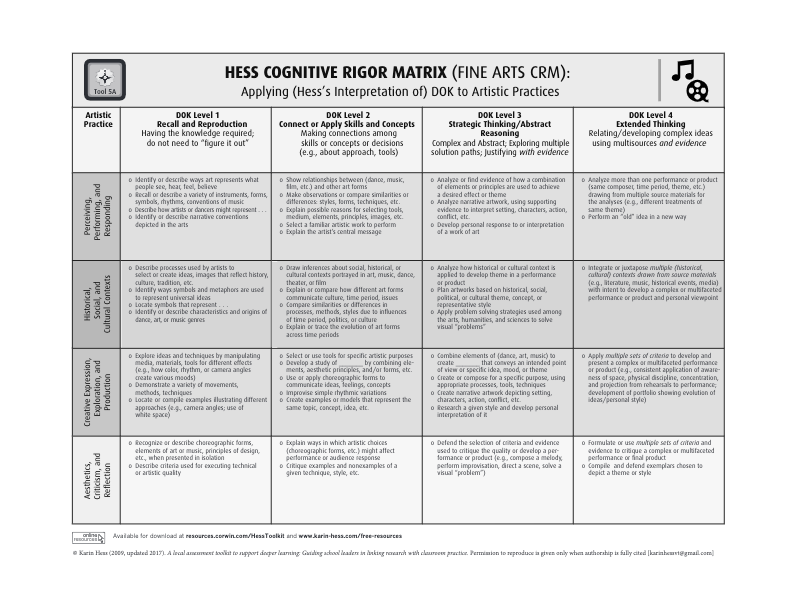
Applying (Hess’ Interpretation of) Webb’s Depth-of-Knowledge Levels to Artistic Practices
